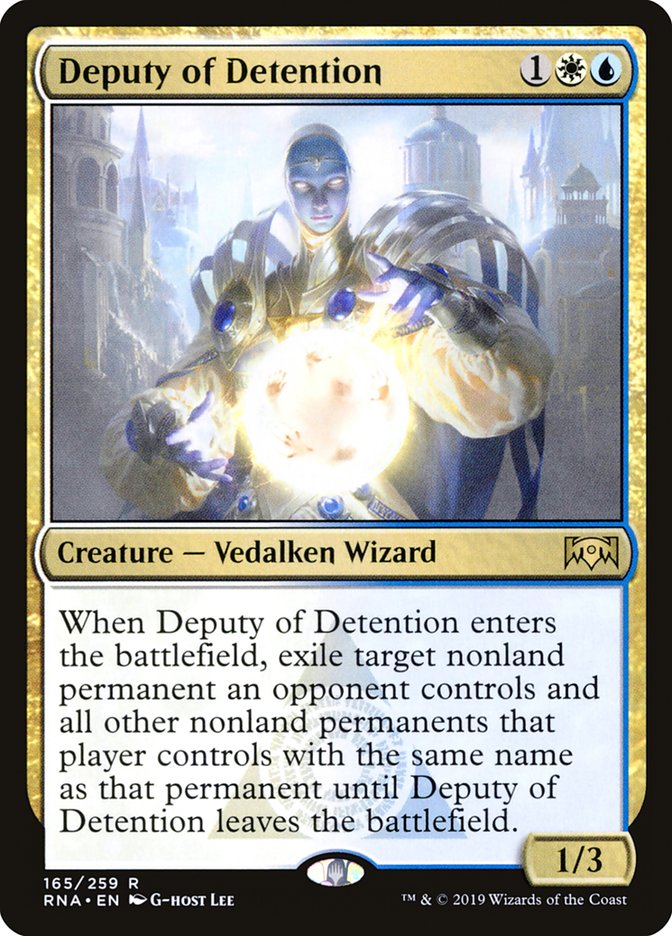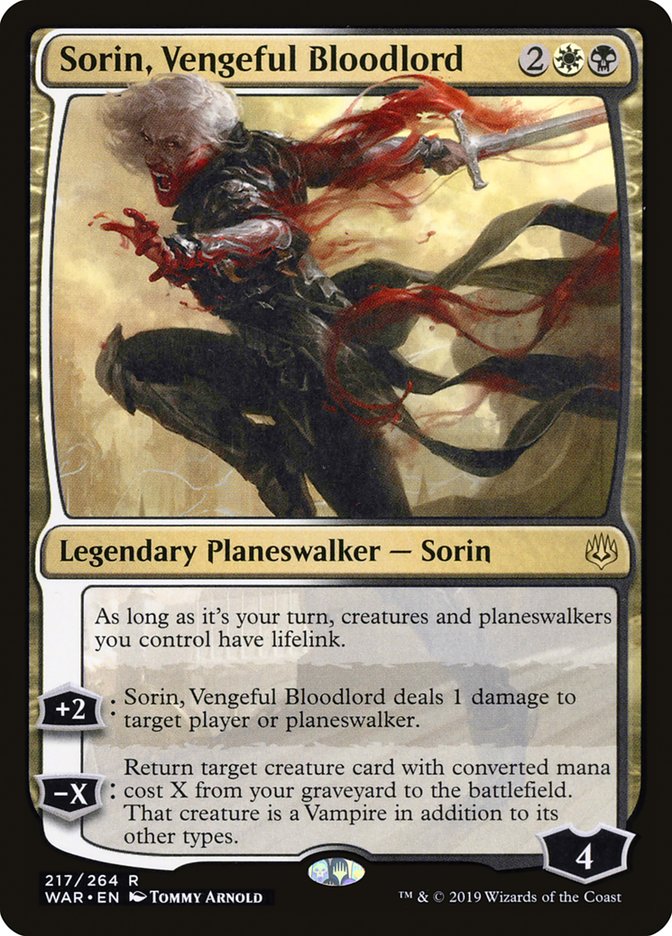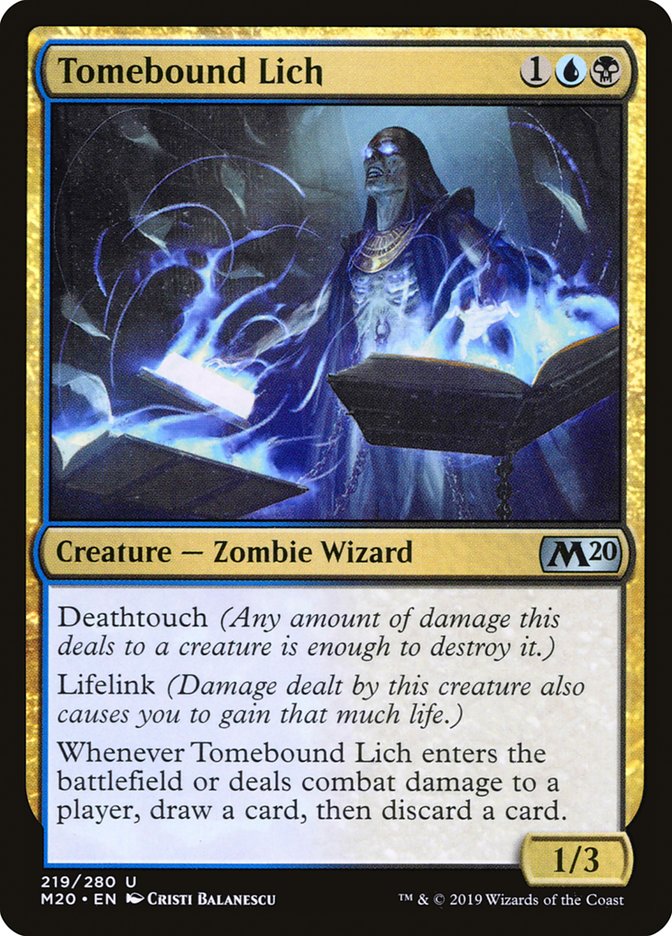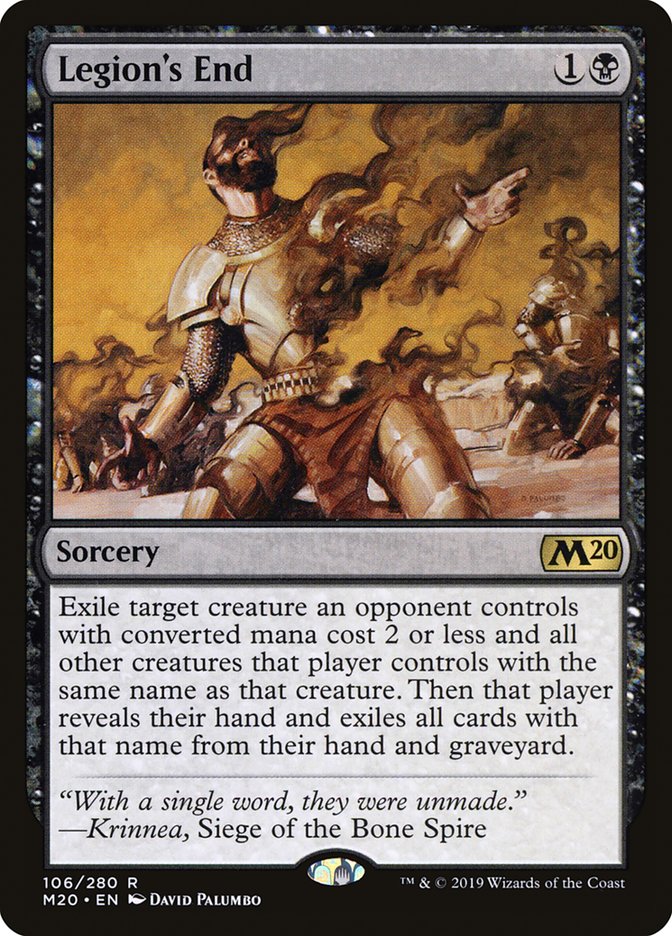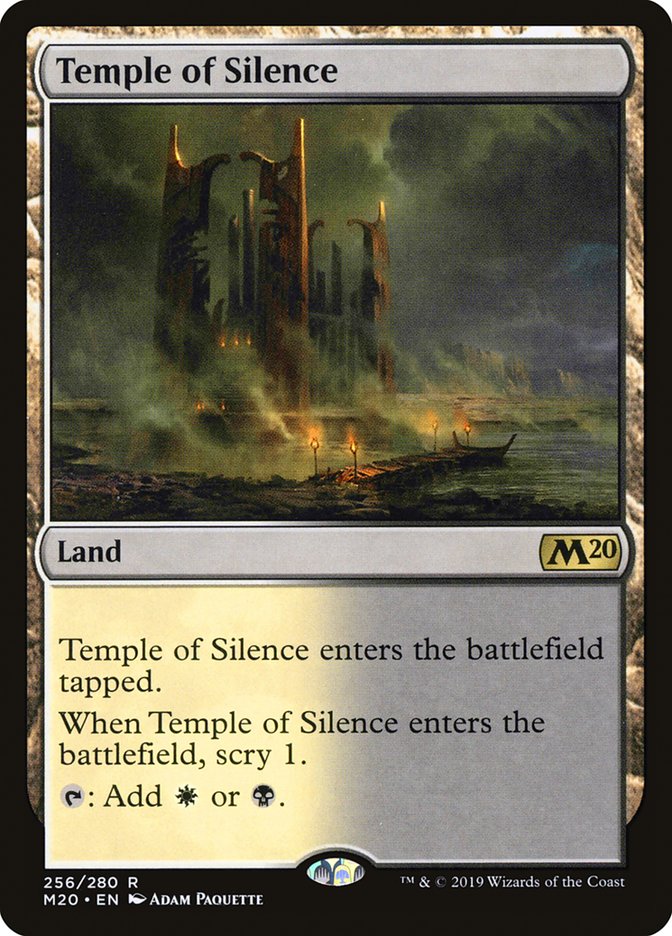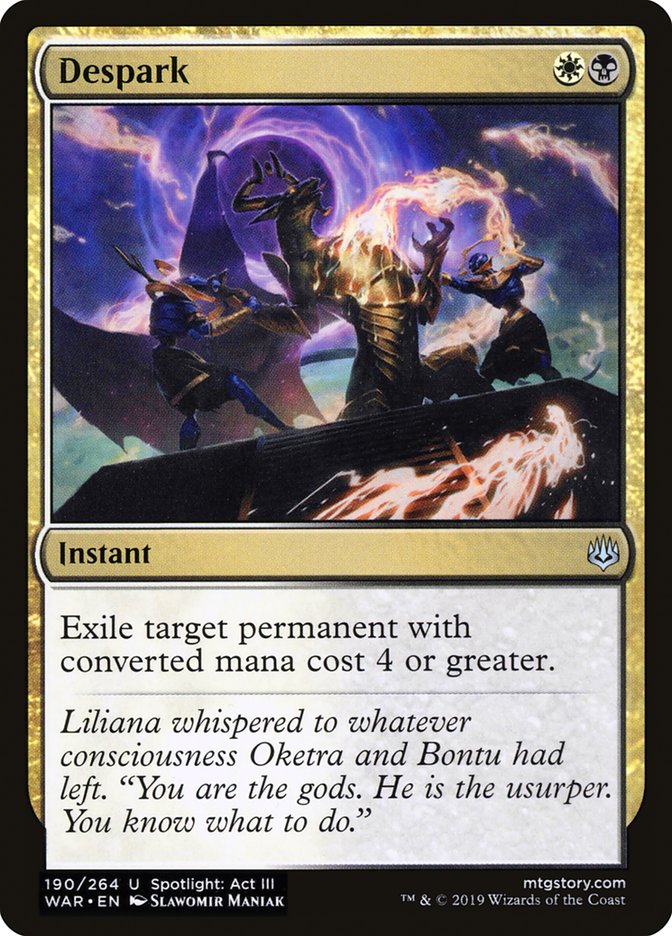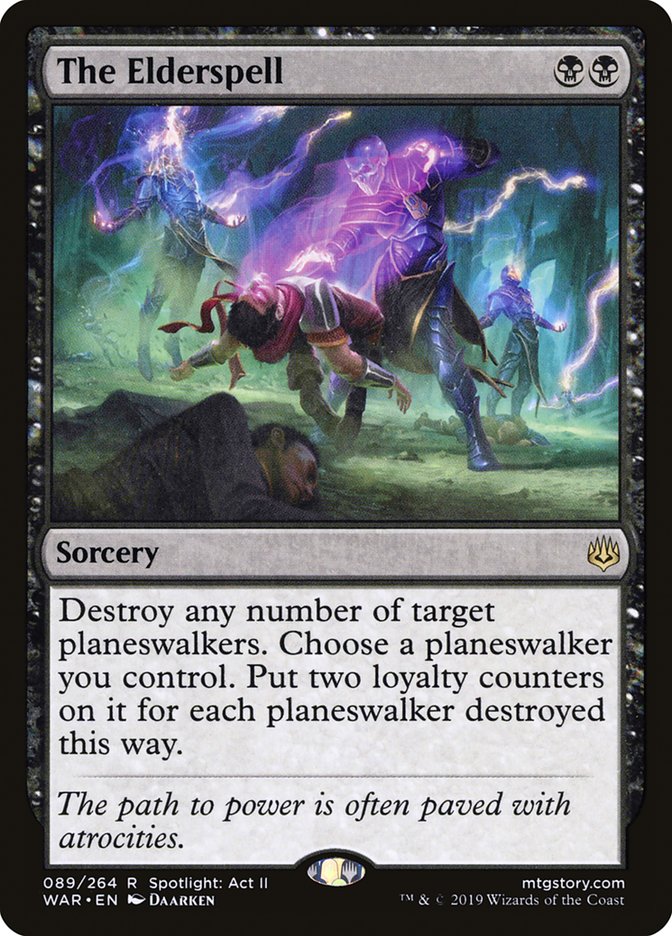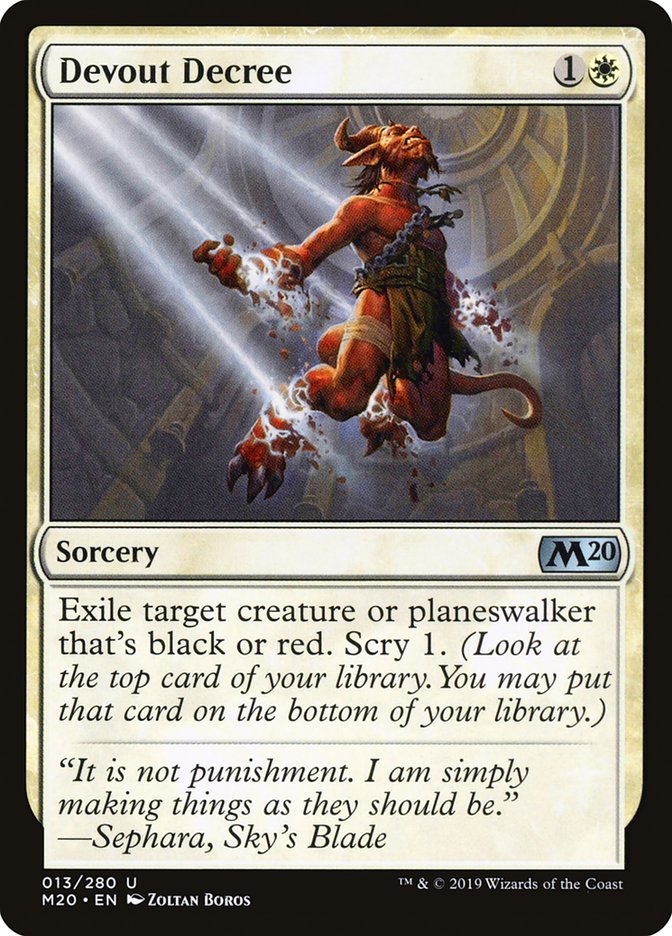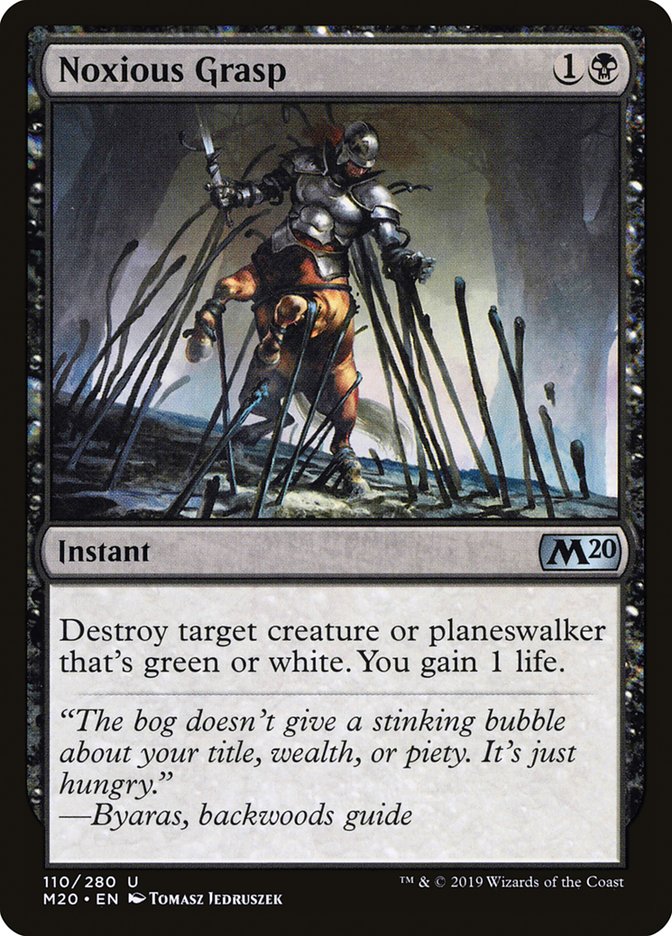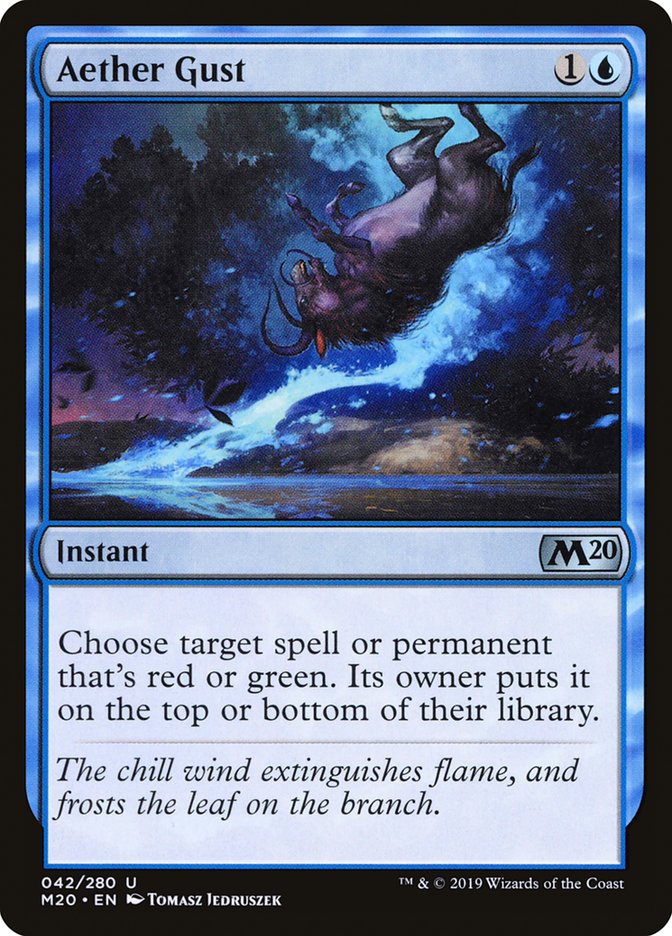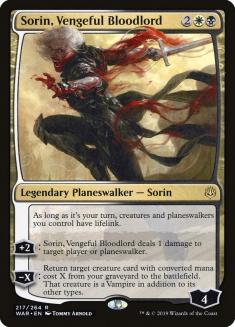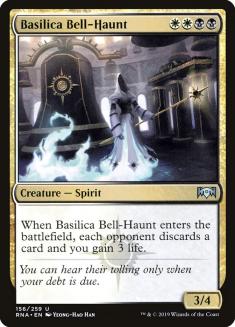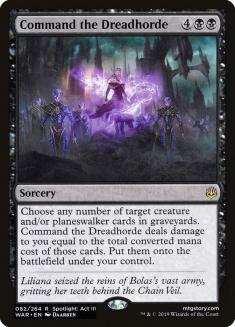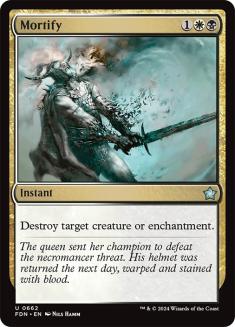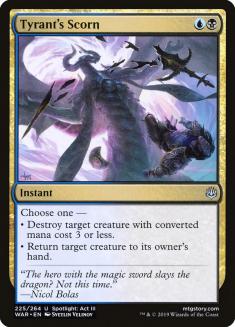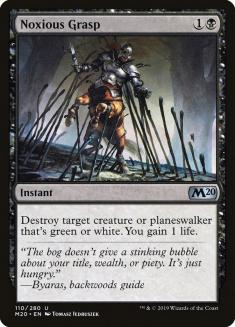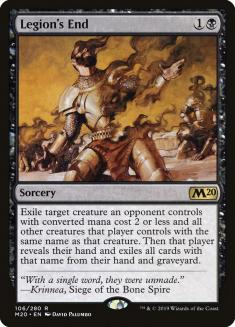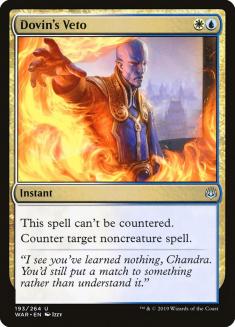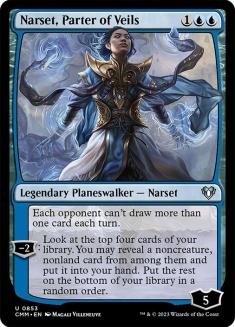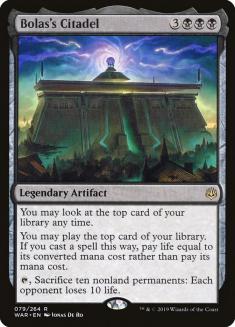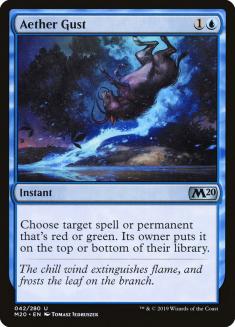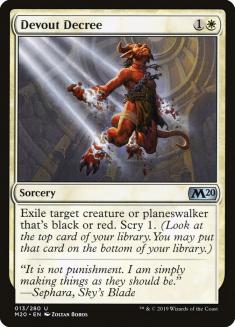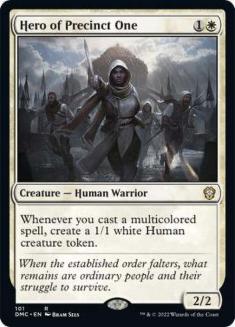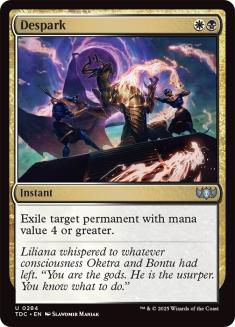Have you ever thought that you’re right despite everyone else thinking you’re wrong? That’s how I feel when it comes to Esper Hero.
Whether it’s the mass adoption of Elite Guildmage or the blatant refusal to play Deputy of Detention, there are plenty of ways to critique the current builds of Esper Hero. First of all, the deck to beat is Bant Scapeshift (although now maybe with a black splash). You know what Scapeshift decks are playing in order to have a stronger win rate in the mirror?
Even if you weren’t interested in removing massive hordes of tokens, Deputy of Detention solves so many problems for Esper Hero. Core Set 2020 Standard has a diverse suite of permanents that Deputy cleanly answers.
The main argument against Deputy is that it gets killed, but “dies to Doom Blade” has never been a great reason to not play a creature. They might not have a removal spell right away and, in the case of the various Bant decks running around, they might not have much removal at all. Plus, Hero of Precinct One is basically a must-kill creature, so playing more of those types of cards really taxes your opponent’s removal. You also have access to Sorin, Vengeful Bloodlord in order to bring Deputy back and gain a little bit of value in the process.
While Sorin isn’t as strong as it used to be due to the lack of Mono-Red Aggro and planeswalkers that it used to bully, it’s still a fine inclusion.
Here is my current decklist where I’m proudly playing four copies of Deputy of Detention.
Creatures (12)
Planeswalkers (10)
Lands (26)
Spells (12)
Sideboard

There’s nothing too fancy about this decklist, as we’ve seen builds like this since War of the Spark. However, Core Set 2020 did give us some interesting tools, namely Tomebound Lich and the sideboard color hosers.
Similarly to Deputy of Detention, Tomebound Lich fits a niche role, albeit an important one. In a deck that wants some serious card flow and also benefits from building a large graveyard, Tomebound Lich is a welcome addition. Lifelink and deathtouch are also two great abilities. People aren’t playing enough of this card.
I would prefer to play Oath of Kaya in my Command the Dreadhorde deck, but things like Rotting Regisaur and Wilderness Reclamation demand Mortify instead. If those cards aren’t an issue to you, you can make the swap to Oath of Kaya.
Legion’s End is another fine answer to a horde of Zombie tokens, but it’s not like they cast Scapeshift and can’t do anything afterward. Just the act of putting four Field of the Deads onto the battlefield will make it difficult to win. It’s also a fine answer to Adanto Vanguard. You could play Disfigure instead, which I did until Scapeshift blew up, but not killing Marauding Raptor is a big deal too.
I thought Temple of Silence was going to be a huge upgrade. Maybe there’s a way to incorporate a couple of copies, but it turned the manabase into an absolute mess. I’m still on the fence about this one because it seems like there should be a way to make it work, but it currently eludes me.
The sideboard mostly contains versatile answers to problematic permanents, disruption for combo decks, and some additional engine pieces. As always, it should be tailored to what you expect to face. For example, if Mono-Red Aggro and Simic Nexus aren’t showing up, there’s very little necessity for Despark. While it was once a highly versatile card that even saw maindeck play, most of the decks that are popular in Core Set 2020 Standard focus heavily on cards that cost less than four mana.
Similarly, I don’t have any copies of The Elderspell in my 75, another card that used to see maindeck play. The metagame currently doesn’t warrant it and I found myself wanting to cut it entirely.
Building a three-color deck and having access to a plethora of color hosers is interesting. At this point, I’ve basically tried them all. Which ones and how many you play is determined by what you’re struggling against. For example, I had more Noxious Grasps initially, yet found that Despark and the various spot removal spells cleaned up most of what I was trying to kill anyway.
Because of the prevalence of Orzhov Vampires and Jund Dinosaurs, I eventually realized that Devout Decree was the perfect card. It doesn’t kill Experimental Frenzy, so I would much prefer Celestial Purge, but if we want a way to remove Sorin, Chandra, Tibalt, and the like, Devout Decree is the perfect answer.
The miser’s Noxious Grasp and Aether Gust are in the sideboard because of how versatile they are. You could make the case for a third Dovin’s Veto in a few matchups, but Aether Gust does the same job in a lot of places.
Thief of Sanity could be a sideboard option for Scapeshift and Nexus, but it’s just as weak to Teferi, Time Raveler as ever. Scapeshift’s Deputy of Detentions also make things a little awkward. For the most part, I’m just trying to disrupt those decks with discard and some counterspells while doing my normal thing.
If you really want to hammer Scapeshift and Nexus, you could try Fall of the Thran.
I’m not playing sweepers like Kaya’s Wrath or Time Wipe because they aren’t particularly good with Deputy of Detention, but I also don’t think they line up particularly well against the format. Mono-Red Aggro gets under them and typically punishes them with Experimental Frenzy, Boros Feather will usually only deploy one threat at a time, and Jund Dinosaurs has incredible reloads with things like Regisaur Alpha.
Orzhov Vampires is the one matchup where they should be good, but they have Adanto Vanguard and Sorin, Imperious Bloodlord to really punish you. In each of these matchups, you are better off by playing a game involving spot removal and setting up blockers for their smaller stuff.
General Tips
- This deck is very color-intensive and mana-hungry. It’s also resource-starved until you can get an engine online. Because of those, I find myself rarely mulliganning if I have functional mana.
- Keeping a hand without an enabler for your checklands is typically a poor choice because you can’t afford your lands entering the battlefield tapped each turn. However, a hand with Glacial Fortress and Swamp is usually fine because you have a Swamp to enable Isolated Chapel and Drowned Catacomb if you draw them.
- Be careful which removal spell you use on each threat because each kills very specific things.
- Use your mana every turn.
Sideboarding
VS Bant Scapeshift
Out:
In:
There’s a lot of sideboarding going on here because there are a lot of dead cards in the maindeck. If they have Shifting Ceratops and Teferi, Hero of Dominaria, maybe you want a Despark or two.
You’ll typically win by completely decimating them with planeswalkers, discard, and removal, but some games will be won on the back of Hero of Precinct One and disruption.
VS Orzhov Vampires
Out:
In:
If they slow down their deck with Noxious Grasps and Duresses, I really like sideboarding in some copies of Narset, Parter of Veils. I’ve tried Drawn from Dreams in the sideboard, which can be quite powerful, especially in matchups where you want to kill creatures and draw cards. However, Bant Scapeshift and Simic Nexus are tough matchups where you’d rather have Narset, Parter of Veils instead. You can usually defend Narset well enough against Orzhov Vampires, but you still don’t want too many of them.
Since they have the ability to grind, you really want Command the Dreadhorde here, even though they are supposedly an aggro deck. You have plenty of tools to slow them down and Command the Dreadhorde is an excellent way to close the game.
VS Esper Hero
Out:
In:
Draw some cards, kill their stuff, and resolve Command the Dreadhorde.
VS Jund Dinosaurs
Out:
In:
You basically have to kill everything on sight because each of their cards hit so hard. They are incredibly weak to decks with piles of spot removal, so you should be able to punish them.
VS Mono-Red Aggro
Out:
In:
This is basically the only matchup where I’ll cut Hero of Precinct One, and even then I’m just shaving a copy or two. It’s one of your best Turn 4 plays, but you really need to be doing something else on Turn 2 that isn’t going to trade with a Shock.
Depending on how they sideboard, I could see keeping Command the Dreadhorde, but it would require them to have multiple Tibalts, Chandras, and maybe Treasure Map. Basically, if they sideboard into a more controlling deck, you need to match them.
Lyra Dawnbringer used to be great because they didn’t have a clean answer for it and it could beat Experimental Frenzy and attack planeswalkers, but with Fry, she no longer sticks around for very long. Enter the God-Eternals is a fine value card if you want it, but it’s not as good as pressuring them when they have Frenzy going because they’ll have blockers. Plus, Tibalt can make it very awkward.
Stop their early aggression, save a removal spell for Experimental Frenzy, and you’ll be very successful here.
VS Boros Feather
Out:
In:
If you had more cards to bring in, I could see shaving a Hero of Precinct One in this matchup based on the same principles as the Mono-Red Aggro matchup.
VS Simic Nexus
Out:
In:
This is the hardest matchup, but I like my spot. It’s also one of the most enjoyable matchups because you get to slowly pick them apart and grind them into dust.
Conclusion
Overall, I’m happy with the maindeck, and while the sideboard is currently versatile, it could be dramatically improved if you wanted to focus on a specific matchup or two. Your matchups against the higher tier of Core Set 2020 Standard are all solid or better, so there’s no other deck I’d rather play at the moment.


